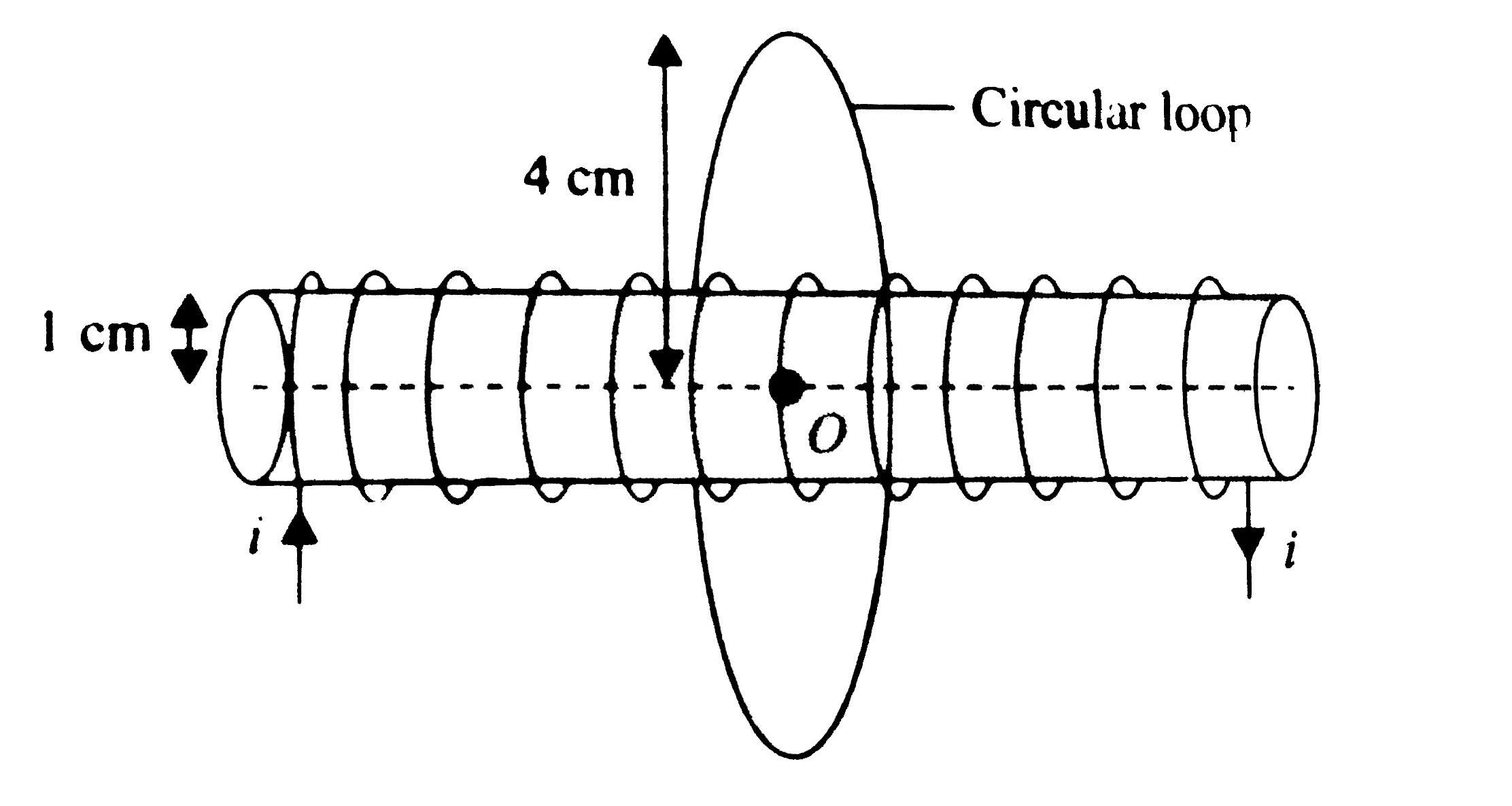A solenoid has an inductance of 10 henty and a resistance of 2 ohm. It is connected to a 10 volt battery. How long will it take for the magnetic energy to reach 1/4 of its maximum value?
3.5s
2.5s
5.5s
7.5s
The correct Answer is:b
To solve the problem, we will follow these steps:
Step 1: Identify the given values
- Inductance L=10H
- Resistance R=2Ω
- Voltage V=10V
Step 2: Calculate the maximum current I0
The maximum current I0 can be calculated using Ohm's law:
I0=VR=10V2Ω=5A
Step 3: Calculate the maximum energy E0
The maximum energy stored in the inductor is given by the formula:
E0=12LI20
Substituting the values:
E0=12×10H×(5A)2=12×10×25=125J
Step 4: Calculate the energy at 14 of maximum value
To find the energy when it reaches 14 of its maximum value:
E=E04=125J4=31.25J
Step 5: Relate energy to current
The energy stored in the inductor can also be expressed as:
E=12LI2
Setting this equal to 31.25J:
31.25=12×10×I2
Solving for I2:
I2=31.25×210=6.25⇒I=√6.25=2.5A
Step 6: Use the formula for current growth in an RL circuit
The current in an RL circuit as a function of time is given by:
I(t)=I0(1−e−RLt)
Setting I(t)=2.5A:
2.5=5(1−e−RLt)
Dividing both sides by 5:
0.5=1−e−RLt
Rearranging gives:
e−RLt=0.5
Step 7: Take the natural logarithm
Taking the natural logarithm of both sides:
−RLt=ln(0.5)
Substituting R=2Ω and L=10H:
−210t=ln(0.5)
−15t=−0.693⇒t=0.693×5=3.465s
Step 8: Round to appropriate significant figures
Rounding gives approximately:
t≈3.5s
Final Answer:
The time taken for the magnetic energy to reach 14 of its maximum value is approximately 3.5 seconds.
---
- Inductance L=10H
- Resistance R=2Ω
- Voltage V=10V
The maximum current I0 can be calculated using Ohm's law:
I0=VR=10V2Ω=5A
The maximum energy stored in the inductor is given by the formula:
E0=12LI20
Substituting the values:
E0=12×10H×(5A)2=12×10×25=125J
To find the energy when it reaches 14 of its maximum value:
E=E04=125J4=31.25J
The energy stored in the inductor can also be expressed as:
E=12LI2
Setting this equal to 31.25J:
31.25=12×10×I2
Solving for I2:
I2=31.25×210=6.25⇒I=√6.25=2.5A
The current in an RL circuit as a function of time is given by:
I(t)=I0(1−e−RLt)
Setting I(t)=2.5A:
2.5=5(1−e−RLt)
Dividing both sides by 5:
0.5=1−e−RLt
Rearranging gives:
e−RLt=0.5
Taking the natural logarithm of both sides:
−RLt=ln(0.5)
Substituting R=2Ω and L=10H:
−210t=ln(0.5)
−15t=−0.693⇒t=0.693×5=3.465s
Rounding gives approximately:
t≈3.5s
The time taken for the magnetic energy to reach 14 of its maximum value is approximately 3.5 seconds.
Similar Questions
A solenoid has an inductance of 10H and a resistance of 2Ω. It is connected to a 10V battery. How long will it take for the magnetic energy to reach 1/4 of its maximum value?
View SolutionA solenoid has an inductance of 50 mH and a resistance of 0.025Ω. If it is connected to a battery, how long will it take for the current to reach one half of its final equilibrium value?
View SolutionA solenoid of resistance 50Ω and inductance 80 H is connected to a 200 V battery, How long will it take for the current to reach 50% of its final equlibrium value ? Calculate the maximum enargy stored ?
View SolutionElectric field inside a copper wire of length 10 m , resistance 2 ohm connected to a 10 volt battery is
View SolutionA coil having an inductance L and a resistance R is connected to a battery of emfε. Find the time elapsed before, the magnetic field energy stored in the circuit reaches half its maximum value.
View SolutionA long solenoid having n = 200 turns per metre has a circular cross-section of radius a1=1cm. A circular conducting loop of radius a2=4cm and resistance R=5(Ω) encircles the solenoid such that the centre of circular loop coincides with the midpoint of the axial line of the solenoid and they have the same axis as shown in Fig.

A current 't' in the solenoid results in magnetic field along its axis with magnitude B=(μ)ni at points well inside the solenoid on its axis. We can neglect the insignificant field outside the solenoid. This results in a magnetic flux (ϕ)B through the circular loop. If the current in the winding of solenoid is changed, it will also change the magnetic field B=(μ)0ni and hence also the magnetic flux through the circular loop. Obvisouly, it will result in an induced emf or induced electric field in the circular loop and an induced current will appear in the loop. Let current in the winding of solenoid be reduced at a rate of 75A/sec.
When the current in the solenoid becomes zero so that external magnetic field for the loop stops changing, current in the loop will follow a differenctial equation given by [You may use an approximation that field at all points in the area of loop is the same as at the centre
View SolutionA coil of resistance 10Ω and an inductance 5H is connected to a 100 volt battery. Then energy stored in the coil is
View SolutionA potential difference of 6V is applied to a coil of inductance 0.5H and a resistance of 4 ohm connected in series. The time taken for the current to reach half the maximum value is (in seconds)
View SolutionA coil of inductance 8.4mH and resistance 6 Ω is connected to a 12V battery. The current in the coil is 1.0A at approximately the time.
View SolutionA solenoid of inductance 50 mH and resistance 10 Omega is connected to a battery of 6V. Find the time elapsed before the current acquires half of its steady - stae value.
View Solution
